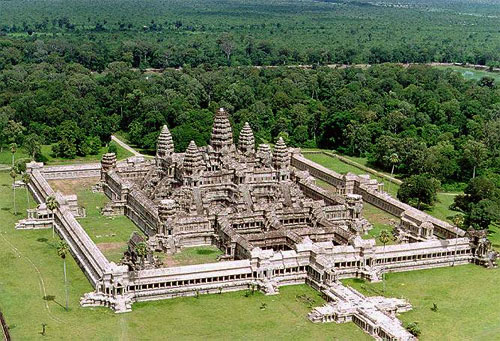Angkor Archaeological Park, located in northern Cambodia is one of the most important archaeological sites is the world, stretching over some 400 square kilometres, including forested area, Angkor Archaeological Park contains the magnificent remains of several capitals of the Khmer Empire of the 9th to the 15th centuries, including the largest pre-industrial city in the world. The most famous are the Temple of Angkor Wat and, at Angkor Thom, the Bayon temple with its countless sculptural decorations of Buddha faces, Ta Prohm
Angkor Archaeological Park was declared a UNESCO World Heritage Site in 1992. At the same time, it was also placed on the List of World Heritage in Danger due to looting, a declining water table, and unsustainable tourism. UNESCO has now set up a wide-ranging programme to safeguard this symbolic site and its surroundings.
Angkor itself has no accommodations and few facilities; the nearby town of Siem Reap, just 7km to south, is the tourist hub for the area.
In order to facilitate all visitors needs such as private guided tours to ancient Angkor temples, outskirt remote temples or around Cambodia included accomodateions on the spot as pagkage customized tours.
Siem Reap Guide Services, we are leading local owned tour guide team based in Siem Reap Angkor Wat, provide wonderful fully private guided tours, customized tours and adventure tours for a memorable, joyous, fruitiful trip and photographic opportunities to viisitors that have chance to experience to our country.
Tours are provided with professional tour guide services into temples with comfortable vehicles eqquiped with air-conditioning, cold chilled waters and wipes.
Please select your prfereence and optional vehicles such as SUV, Van, Seden, 4WD, Tuk Tuk and mountain bike ( for short trip or closer temples ) with our flexible guides plus schedules and hassle free.


